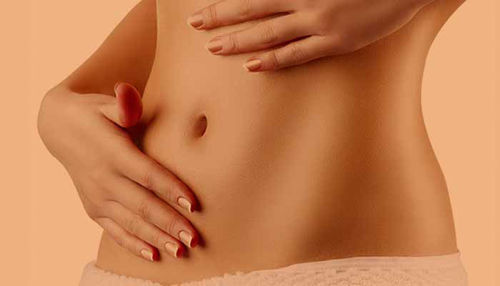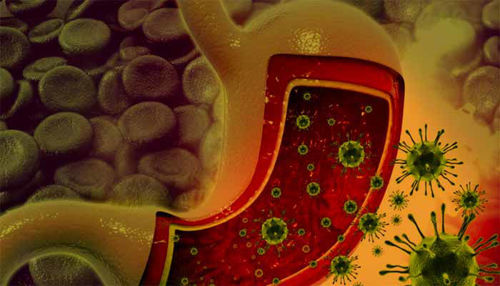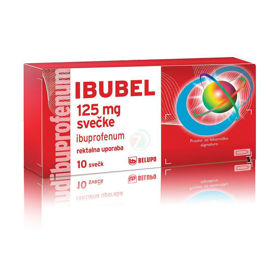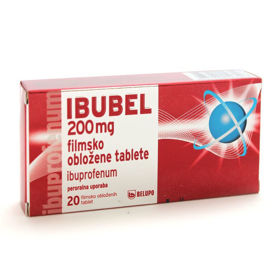Appendicitis or appendicitis is an inflammation of the 5-centimeter tissue tube originating from the large intestine. There is lymph tissue in the appendix, in which antibodies can be produced, but no one knows what the appendix is for. However, we know something these days: we can live without appendicitis without consequences.
APPENDIX: General | Symptoms | Causes | Diagnostic Procedures | Warning signs | Treatment | Questions and Answers | Sources/references
Appendicitis is an emergency condition that requires an immediate surgical procedure to remove the appendix. If this is not done, the inflamed appendix can spill or burst, causing the infection to spread throughout the abdominal cavity.
This can trigger peritonitis, a severe infection of the lining of the abdominal cavity (peritoneum), which can be fatal if not treated quickly enough with strong antibiotics.
Image: The main problem with appendicitis is the risk of a burst appendix.
.jpg)
Sometimes, a pus-filled abscess forms outside the inflamed appendix. After this, the connective scar can separate the appendix from the rest of the abdominal cavity, preventing the spread of infection. Appendicitis with abscess is a less urgent condition, but, unfortunately, it is impossible to diagnose without surgery. For this reason, all cases of appendicitis are considered an emergency.
Symptoms
Classic symptoms of appendicitis include:
- A vague pain near the belly button or in the upper abdomen that becomes sharp as it moves to the lower right abdomen. This is usually the first character;
- loss of run;
- nausea and vomiting soon after abdominal pain occurs;
- temperature between 39 and 41 degrees Celsius;
- constipation or diarrhea with intestinal gas.
Almost half of the cases have other symptoms, including:
- with dull or sharp pain anywhere in the upper or lower abdomen, back, or buttocks;
- with pain when urinating;
- with vomiting, which appears before abdominal pains.
Consult your doctor if you have pain that matches the above symptoms. Acute appendicitis is an emergency medical condition that can be fatal. Immediate surgery is often essential. Do not drink, eat, or use pain relievers, antacids, laxatives, or hot water bottles. All of these can cause a spilled appendix; you have symptoms of an inflamed appendix even though you have already had your appendix removed. You may have pelvic inflammatory disease, colorectal cancer, diverticulitis, ectopic pregnancy, gastroenteritis, or colon problems. Seek medical attention immediately.
Causes
Appendicitis occurs when the tube-shaped appendix becomes blocked, often with stool, a foreign body, or cancer. A blockage can also be caused by inflammation: like other lymphatic tissues, the appendix reacts to any infection by swelling. When it swells, its mouth slowly closes.
Diagnostic procedures
Diagnosing appendicitis can sometimes be tricky. Time is always critical. Sometimes, however, the symptoms of appendicitis are unclear or very similar to other, less urgent conditions (including bladder infections, colitis, Crohn's disease, gastritis, gastroenteritis, and ovarian problems). The doctor will gently press on the lower right part of the abdomen to harden the inflamed appendix.
Image: Most cases of appendicitis occur in people between 10 and 30.
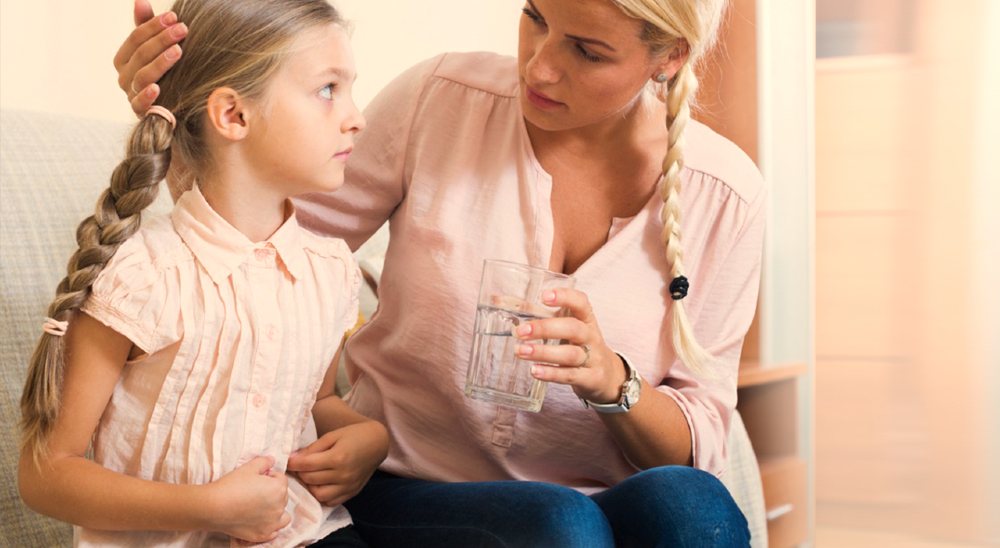
An inflamed appendix can sometimes cause rectal pain instead of abdominal pain, so your doctor will also palpate your rectum with a gloved finger. Blood tests will show if you have an increased white blood cell count, which means your body is fighting an infection. Abdominal CT imaging and ultrasound have proven to be fast and reliable — but not ideal — methods for confirming appendicitis.
Warning signs
The appendix is a 5-centimeter extension of the large intestine; if it becomes blocked or its branch to the large intestine is closed due to something, the appendix can become inflamed. The classic symptom of such inflammation is constant and sharp pain in the lower right part of the abdomen.
Picture: A symptom of inflammation is a sharp pain in the lower right part of the abdomen.
.jpg)
Although appendicitis can affect people of all age groups, it rarely occurs in children under two and most often affects people between the ages of 10 and 30.
Treatment
The standard treatment for appendicitis is surgical removal of the appendix, called an appendectomy.
Conventional medicine
If doctors suspect appendicitis, they usually remove it quickly to prevent it from spilling. If an abscess has already formed on the appendix, a double procedure may be necessary; first, all the pus is drained from the abscess, and then the appendix is removed. Antibiotics are given before the procedure to prevent possible peritonitis. The appendix is removed under general anesthesia through an incision in the abdomen about 6 centimeters long.
Video content: Appendicitis - causes, symptoms, diagnosis, treatment, and pathology.

In case of peritonitis, a tube (drain) is inserted into the abdomen to drain the pus. Already 12 hours after the operation, the patient can get up and walk around. However, he can perform all activities within two or three weeks as before. Suppose the operation is performed with a laparoscope (a thin, telescope-like instrument for examining the inside of the abdomen). In that case, the incision entry wound is even more minor, and the recovery is even faster.
Alternative ways
If you have appendicitis, you need medical attention, and alternative treatments can help you prepare for or recover from surgery.
Acupressure
Massaging the listed points daily can speed up recovery after appendectomy. For better bowel movement and function, massage Stomach 36 and Bladder 25; to calm the pain, add Colon 4; for excessive winds, massage the Liver 3 and Spleen 6 points for overall faster healing.
Homeopathy
Take one dose of phosphorus (30c) before surgery, which can reduce nausea after anesthesia; if necessary, take the same dose every two hours after surgery until the nausea is gone.
Video content: The best food for appendicitis.

After surgery, you can also apply a solution of hypericum and calendula (4 drops of each, dissolved in a cup of water) three or four times a day to speed up wound healing.
Home remedies
- Keep the wound clean so that it heals faster and prevents infection.
- Open the vitamin E capsule once the wound is closed and apply the gelatinous contents to reduce scarring.
Questions and answers
Can appendicitis be fatal?
The main problem with appendicitis is the risk of appendicitis rupture. This can happen if the appendix is not removed quickly. A ruptured appendix can cause an infection in the abdomen called peritonitis. Peritonitis can be severe and fatal if not treated immediately[1].
What causes appendicitis?
Appendicitis occurs when the tube-shaped appendix becomes blocked, often with stool, a foreign body, or cancer. A blockage can also be caused by inflammation: like other lymphatic tissues, the appendix reacts to any infection by swelling. When it swells, its mouth slowly closes.
Who most often gets appendicitis?
Most cases of appendicitis occur in people between 10 and 30. A family history of appendicitis can increase your risk, especially if you are male. Cystic fibrosis also seems to increase the risk of appendicitis in a child[1].
How does appendicitis manifest itself?
Classic symptoms of appendicitis include:
- A vague pain near the belly button or in the upper abdomen that becomes sharp as it moves to the lower right abdomen. This is usually the first character;
- loss of run;
- nausea and vomiting soon after abdominal pain occurs;
- temperature between 39 and 41 degrees Celsius;
- constipation or diarrhea with intestinal gas.
In almost half of the cases, other symptoms appear, including:
- with dull or sharp pain anywhere in the upper or lower abdomen, back, or buttocks;
- with pain when urinating;
- with vomiting, which appears before abdominal pains.
How long does recovery take after appendicitis surgery?
Once you've had an appendectomy, you will likely recover pretty quickly. Most patients leave the hospital 1 to 2 days after surgery. The good news is that you can return to all those everyday activities within 2 to 4 weeks[2].
Sources and references
- Appendicitis - https://www.hopkinsmedicine.org
- Appendectomy - https://www.mountsinai.org





